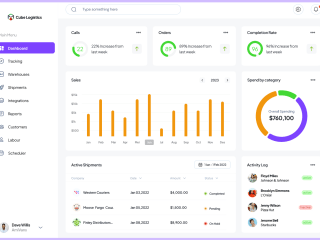Innovating Around The E-mobility Ecosystem.

Gerald Mwanu

An attempt at understanding the electric mobility ecosystem to see through the increase in uptake and zero emissions in Nairobi, understanding user behaviors and needs.
Overview
With Kenyan Government's efforts over recent years to encourage more players in the market through policy and regulation changes, as well as the private sector's deployment of electric vehicles and associated infrastructure: Kenya is gradually adopting electric mobility, or E-Mobility.
The Problem
Despite these best efforts, secondary research into the E-Mobility landscape in Kenya highlights various issues such as high upfront costs of Electric vehicles(EVs), banking
sector skepticism, an inconsistent common policy framework, consumer behaviors when it comes to cost comparisons, and sentiments that hinder consumer-uptake of Electric vehicles(EVs) in Kenya.
Goals & Motivations
- Understand perception on E-mobility and uncover barriers to uptake to Electric Vehicle uptake to help inform insights that can help accelerate in Kenya.
- To pinpoint the key factors driving Electric Vehicle adoption in Kenya through evidence-based research.
Objectives
- Understand consumer perception, needs, behaviors, and willingness for e-mobility uptake.
- Identify stakeholders in the e-mobility sector and their influence on e-mobility uptake in Kenya in the next 3-5 years.
- Identify challenges, barriers, and opportunities for consumer uptake of Electric Vehicles.
Research Background
This project was divided into two phases. The first phase incorporated secondary research, aimed at giving a general understanding of the Electric Vehicle space that comprises 2W(two wheelers), 3W(three wheelers) & 4W(four wheelers).
At this point and time, it was quite early to make conclusive decisions on which to further delve into in terms of research so we conducted a range of interviews, both key informant and field interviews to gather thoughts, needs, wants and perceptions about all electric vehicles. We also rolled out surveys all in an effort to gather both qualitative and quantitative data.
Some Uncovered Facts
- Kenya is in the early stages of e-mobility adoption, both in terms of policies and usage.
- The current electric vehicle (EV) uptake is just 0.03%. This translates to only 1350 EVs out of 4.4 million registered vehicles, which is significantly lower than the global average of 8%.
Research Timeline

Stakeholder Mapping
We categorized the E-Mobility ecosystem into three primary players: Consumers, Retailers, and Enablers.
We identified 18 distinct stakeholder groups some of them including ICE (Internal Combustion Engine) Public Transit Owners, EV(Electric Vehicle) Battery and Charging Infrastructure Providers.
Participant Recruitment
We conducted user interviews, focusing on key areas in Nairobi, including Ngong Road, Karen, Kilimani, Buru buru, Kayole, Thika Road, and the Central Business District (CBD).
In this phase, we primarily employed qualitative research methods, prioritizing interviews while deprioritizing observations and surveys for the second phase of research.
User Personas
Based on the opportunity area, we defined distinct 2-wheeler personas for ICE (Internal Combustion Engine) and EV (Electric Vehicle) and developed comprehensive user journey maps.
These personas and user journeys would enable us to target our efforts in the next phase of research toward the needs, perceptions and behaviors of 2-wheeler consumers.


User Journey Maps
The user journey maps were quite extensive as shown

Key Findings: Themes
It was quite interesting to discover certain insights would not come to light if we did not take on field research. This was the point at which we discovered a variety of perceptions and what really we could decide to move into as far as research was concerned, based on data. Something that had potential to change the direction of our entire project and even our how might we statement!
The following is what we found out from this first phase of research:
- Awareness
The general public have little to no knowledge about E-Mobility with a number unaware of what an Electric Vehicle is. Quote: “I have scanty information on Electric Cars” - KT
- Adoption
Consumer communities and ’Word of Mouth’ have an impact here.
“I’d be encouraged if I heard other people's positive experiences” - K
- Investor/VC Funding
E- Mobility in Kenya is heavily reliant and primarily funded externally.
“Most funding is foreign lead or donor funding” - I
- Climate Change
Climate seems to be a secondary/tertiary driver in E-mobility.
“I think they’re good for the environment” - I (ICE)
- Total Cost of ownership
Kenyan purchase culture focuses on affordability and short term cost savings.
“People would rather pay a little money for a cheaper item that doesn’t last a long time” - AM.
- Local Financing
Local Major banks are yet to develop financial products that support E-Mobility growth and uptake in Kenya. Quote: “There is a need for more debt financing as opposed to the current equity model” - T.C
- Community
There are community building efforts amongst mobility players in Kenya.
“We are part of EMAK (Electric Mobility Association of Kenya) and use this platform to lobby for policies” - BM
- Infrastructure
There’s a need for a shared and extended network for battery supply for 2 wheelers.
“I want an increase in swapping stations” B
- Policy & Government
There is a need for favorable tax policies that can incentivize EV uptake.
“Policy needs to encourage low cost assembly and zero rated battery” - IO
Opportunity Areas
- Narrowing Focus: Through our insights, we have identified an opportunity to narrow our research focus specifically to 2-wheeler consumers.
- Sales Growth: Supporting this opportunity area is the remarkable growth in 2-wheeler sales in Kenya. In 2021, motorcycle sales increased by 15.6%, following a significant 17.4% surge in 2020.
- Rapid Registration: Motorcycle registrations have seen a substantial increase, rising from 246,705 units in 2020 to 285,203 units in 2021. The number of motorcycles registered in 2021 exceeded the 2018 count by more than 1.5 times. This data underscores the growing importance of 2-wheelers in the Kenyan market.
Insight Generation
Coming to this conclusion, our How Might We statement morphed into three more detailed statements:
- How might we better understand the consumer needs to help guide EV retailers to deliver contextual products and services for the Kenyan market?
- How might we design collaborative pathways between EV retailers and ICE communities to enable them to share information, concerns and feedback?
- How might we understand boda boda (2 wheelers that ferry customers) culture in order to better inform EV solution providers on their products and services?
Next Steps
Bearing in mind that this is a project still in progress, we are currently in phase two and just a few steps away from ideation. We are keen to understand user needs in the 2 wheeler Electric vehicle space and majorly behaviors for consumers of the same.
We are currently gathering insights for phase two and working on coming up with creative solutions based on data from research which will be subject to testing and evaluation of how well they meet user needs and behaviors.
We will then share the final prototype with relevant stakeholders, presenting the results of our intensive research and development efforts, considering room for partnerships and investment to further research.




